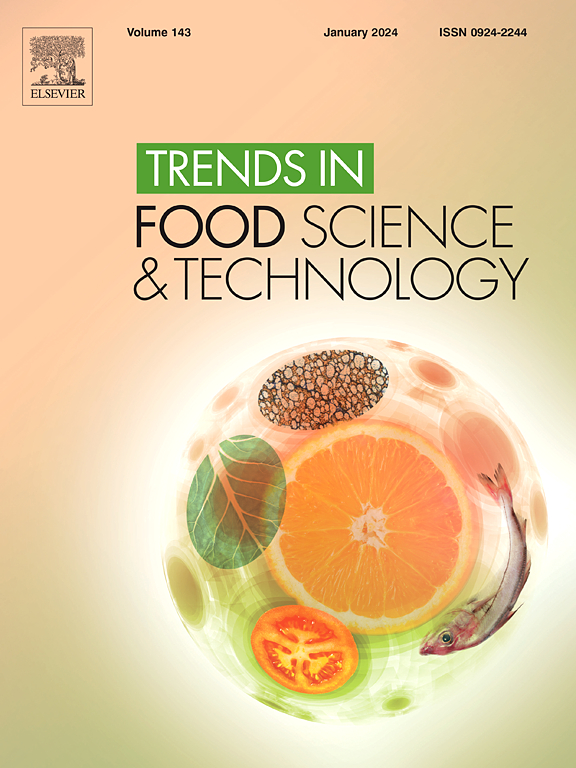A comprehensive review of propylene glycol alginate in the food industry: Synthesis, safety, composite hydrocolloids and application
IF 15.1
1区 农林科学
Q1 FOOD SCIENCE & TECHNOLOGY
引用次数: 0
Abstract
Background
Propylene glycol alginate (PGA) is a safe food additive that functions as an amphiphilic polysaccharide with emulsifying, thickening, and gelling properties. Despite its growing application in the food industry, particularly in composite hydrocolloids, there is no comprehensive review highlighting its role and potential in this field.
Scope and approach
This review summarizes the synthesis, structure, and safety of PGA. It explores various types of PGA-based composite hydrocolloids, including their fabrication methods, microstructures, and functional properties, and evaluates their food applications. Finally, an outlook on future research directions is provided.
Key findings and conclusions
The incorporation of the propylene glycol group in PGA enhances its properties, making it a versatile ingredient for various composite hydrocolloids such as nanoparticles, emulsions, complexes, films, and gels. Among these, systems combining PGA with proteins are the most commonly studied. Key factors influencing the structure and function of PGA-based composites include the type of hydrocolloid, fabrication method, molecular weight, composite order, mass ratio of PGA, pH, ionic concentration, and other components such as calcium ions. PGA exhibits significant potential in food applications, mainly including emulsifiers, foam stabilizers, and nutrient encapsulation. In the future, priority should be given to diversifying the preparation methods and materials for PGA-based composite hydrocolloids, evaluating the feasibility of commercialization by addressing process complexity and loading capacity, exploring novel carriers, and expanding practical applications. In conclusion, PGA has broad potential in the food industry and is anticipated to achieve significant advancements with the guidance provided by this review.
求助全文
约1分钟内获得全文
求助全文
来源期刊

Trends in Food Science & Technology
工程技术-食品科技
CiteScore
32.50
自引率
2.60%
发文量
322
审稿时长
37 days
期刊介绍:
Trends in Food Science & Technology is a prestigious international journal that specializes in peer-reviewed articles covering the latest advancements in technology, food science, and human nutrition. It serves as a bridge between specialized primary journals and general trade magazines, providing readable and scientifically rigorous reviews and commentaries on current research developments and their potential applications in the food industry.
Unlike traditional journals, Trends in Food Science & Technology does not publish original research papers. Instead, it focuses on critical and comprehensive reviews to offer valuable insights for professionals in the field. By bringing together cutting-edge research and industry applications, this journal plays a vital role in disseminating knowledge and facilitating advancements in the food science and technology sector.
 求助内容:
求助内容: 应助结果提醒方式:
应助结果提醒方式:


